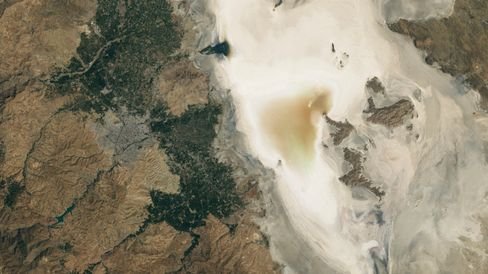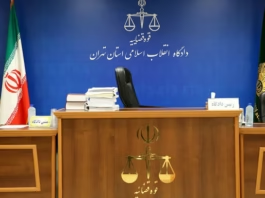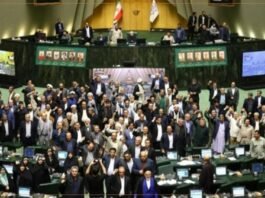The Current State of Wetlands in Iran
Iran is home to several significant wetlands, which play a crucial role in the country’s biodiversity and ecological stability. Notable wetlands include the Anzali Lagoon, the Hamun Wetland, the Jazmourian Wetland, and the Bakhtagan Wetland. Unfortunately, these vital ecosystems face severe threats, primarily due to anthropogenic activities and climate change, leading to alarming rates of desiccation.
The Anzali Lagoon on the Caspian Sea has suffered a significant decline due to pollution, invasive species, and reduced water inflow from rivers. Satellite imagery confirms a shrinkage in this wetland’s area, indicating substantial ecological emergencies. The deterioration of the Anzali Lagoon’s condition not only affects local wildlife but also impacts the livelihoods of communities that depend on its resources for fishing and tourism.
The Hamun Wetland in southeastern Iran presents a more complex issue. This wetland is primarily fed by the Helmand River from Afghanistan, where extensive dam construction has led to a drastically reduced water supply. Recent satellite analyses have shown that considerable areas within the Hamun are dry, highlighting the devastating consequences of transboundary water management and regional policies on wetland conservation.
In the south, the Jazmourian and Bakhtagan wetlands struggle with prolonged drought conditions and excessive groundwater extraction. These wetlands are crucial habitats for migratory birds and fish species, yet reports indicate a significant decline in water levels. Environmental indicators in satellite imagery, such as changes in vegetation cover and surface water extent, reflect the ongoing deterioration of these ecosystems and reveal an urgent need for conservation measures.
The current state of Iran’s wetlands indicates a concerning trend in environmental health that requires immediate attention. As we delve deeper into the implications of such deterioration, we will explore potential solutions and the importance of sustainable management for these irreplaceable ecosystems.
Factors Contributing to Wetland Degradation
Wetland degradation has become a pressing environmental issue, particularly in Iran, where various factors have significantly contributed to the drying of these critical ecosystems. One of the main drivers of wetland degradation is climate change, leading to altered precipitation patterns and rising temperatures. These climatic changes can intensify the natural evaporation process in wetlands, lower their water levels, and threaten the countless plant and animal species that depend on this habitat.
The impacts of climate change are exacerbated by human-induced factors that further stress wetland ecosystems. A prominent factor is the over-extraction of water resources for agricultural, industrial, and domestic use. In many cases, water demand has led to unsustainable practices, resulting in the diversion of rivers and streams that would otherwise replenish wetlands. This over-extraction not only diminishes the water supply but also disrupts the natural hydrology essential for wetland functioning.
Poorly planned urban and agricultural projects can also accelerate wetland degradation. Rapid urbanization often involves land reclamation and infrastructure development that encroach upon wetland areas, leading to their decline. Furthermore, agricultural activities, particularly those involving intensive irrigation, can lead to salinization issues and soil degradation, further impairing wetland health. The inappropriate use of fertilizers and pesticides in these areas can also contribute to nutrient loading and subsequent eutrophication in wetlands.
Finally, inadequate regulatory frameworks for sustainable water management have allowed these practices to continue unchecked. The lack of effective policies and enforcement mechanisms means that essential conservation measures to protect wetlands are often ignored. Addressing these contributing factors is critical not only for the conservation of Iran’s wetlands but also for the overall health of the environment and the well-being of communities that depend on these ecosystems for their livelihoods.
The Importance of Sustainable Development
Sustainable development is a holistic approach that aims to manage resources in a way that balances ecological integrity, economic viability, and social equity. This is particularly imperative in the context of wetland conservation, as these ecosystems are not only invaluable in terms of biodiversity but also play a crucial role in supporting human life. Wetlands are often referred to as the “kidneys of the landscape” due to their ability to filter pollutants from water, thereby improving water quality and strengthening the health of adjacent ecosystems.
Furthermore, wetlands provide essential services that benefit local communities. They serve as natural buffers against floods, mitigate the impacts of climate change, and sustain the hydrological cycle. By incorporating sustainable practices into water management, it becomes possible to preserve these vital areas while fostering economic development. This approach not only secures the ecological health of wetlands but also empowers communities that rely on these resources for their livelihood.
Another critical aspect of sustainable development is the ability to mitigate and adapt to climate change. Wetlands act as carbon sinks by sequestering significant amounts of carbon dioxide, thereby reducing greenhouse gas emissions. Their conservation and restoration can thus play a central role in climate regulation. Moreover, the sustainable use of wetland resources can help avoid overexploitation and ensure these ecosystems remain resilient to environmental degradation.
It is essential to recognize that integrating principles of sustainable development into wetland management can lead to numerous benefits beyond ecological protection. By fostering collaboration among stakeholders, promoting education, and encouraging community participation, sustainable practices can ensure that wetland ecosystems are not only preserved but also thrive for future generations. This multifaceted approach serves as a foundation for embracing the symbiotic relationship between people and wetlands, ultimately fostering a sustainable future.
Assessment of Decision-Making and Future Directions
The responsibility for Iran’s wetlands is closely linked to the actions and decisions of policymakers and officials entrusted with managing these vital ecosystems. Effective governance is essential for the sustainable development of wetlands, yet persistent challenges indicate a misalignment between policy objectives and on-the-ground practice. A critical examination of decision-making processes reveals the need to adhere to the principles of sustainable development, especially when responding to the urgent issues related to wetland degradation.
A pressing question is whether current strategies adequately address the socio-economic pressure factors contributing to wetland degradation. Often, development policies prioritize short-term economic gains over long-term ecological sustainability, leading to the destruction of critical habitats. This trend necessitates a reassessment of existing frameworks to ensure they truly reflect the goals of sustainable development while also meeting the needs of local communities that depend on these wetlands for their livelihoods.
Potential ways forward must involve a multi-layered approach that emphasizes policy recommendations integrating local knowledge and practices with scientific research. Community engagement is crucial, as the local population can offer valuable insights into the historical and ecological significance of wetlands, leading to more effective conservation strategies. Engaging stakeholders at all levels is vital to build consensus and ensure initiatives are both culturally appropriate and ecologically sound.
Technological innovations also offer promising solutions for wetland management. Utilizing advanced monitoring systems and data analytics can enhance decision-making by providing real-time information on wetland health and usage. By investing in technologies that promote sustainable practices, Iran can move towards a future where wetland conservation is not only a priority but also a critical component of broader environmental and economic strategies. Ultimately, the careful integration of policy, community, and technology will be necessary to protect Iran’s wetlands for generations to come.
Dr. Shima Naderi
Attorney at law and member of Center of Attorneys, Judicial Experts and Family Advisors Tehran, Iran.




